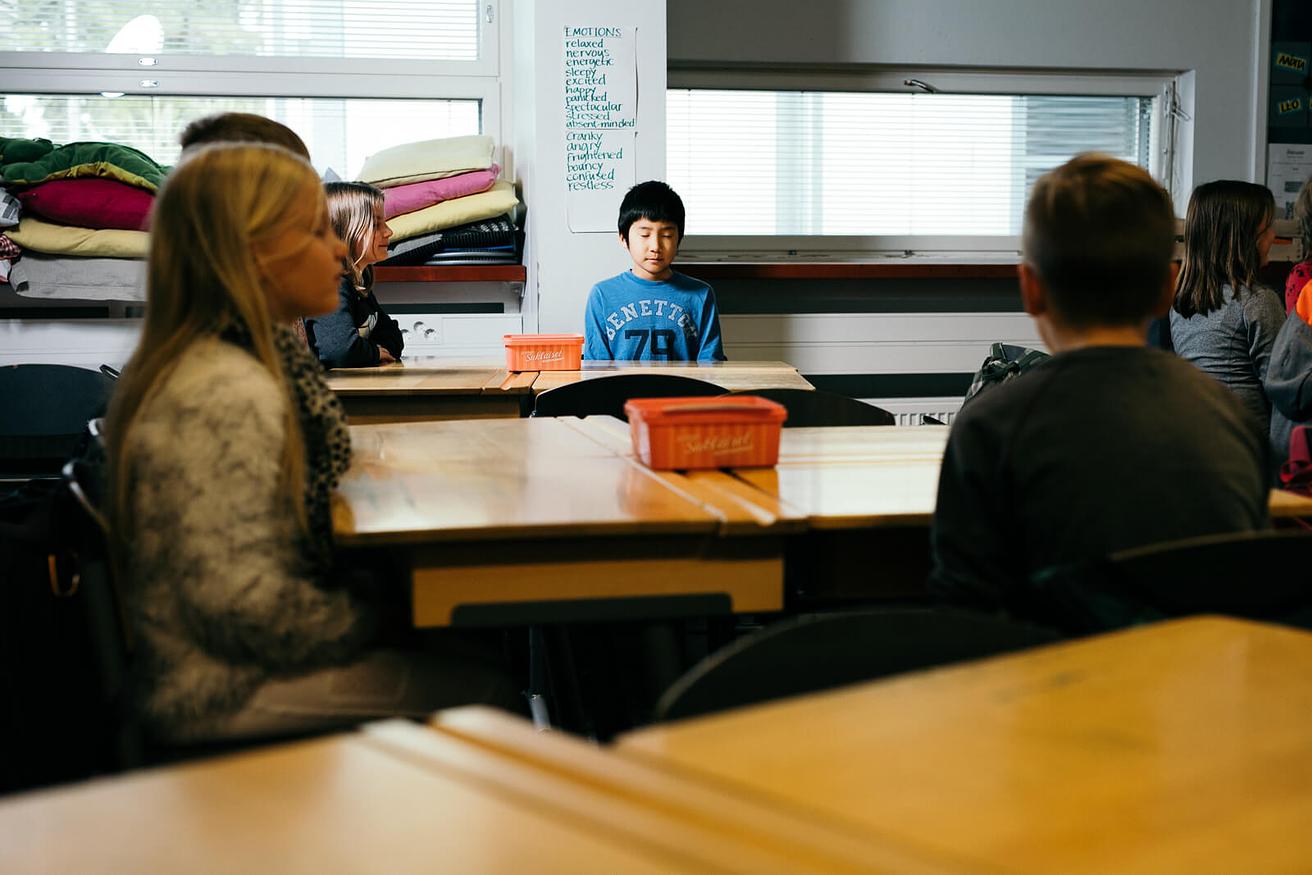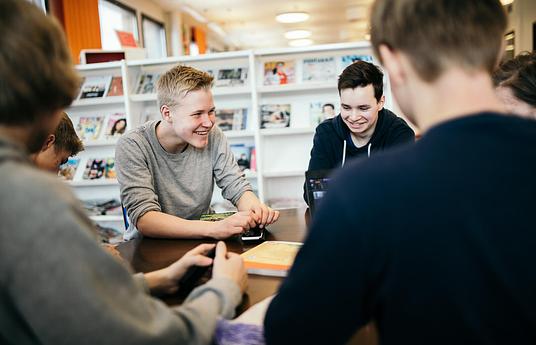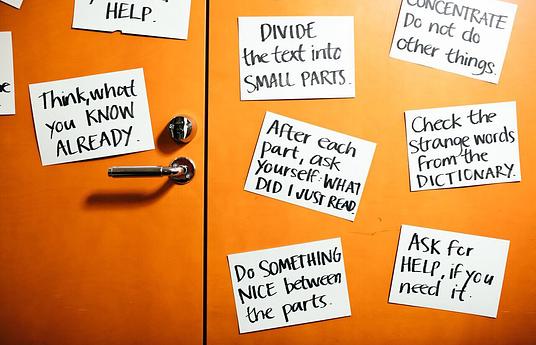You may have heard the term ‘well-being’ and ‘mindfulness’ from time to time over the last year or two. The recent craze sweeping round the world has a rather lovely sentiment, to increase happiness, health and to make people feel more comfortable.
With mental health issues finally being discussed publicly in mainstream media, and more sensitively approached, wellbeing and mindfulness are concepts that are quickly spreading – even into education.
How does mindfulness work and why do we need it in schools?

Mindfulness classes can include meditation, breathing exercises and simple stretches. In these classes, children are taught to notice where their minds might wander to and to then bring their attention back to their breathing. It is a centering process that helps to calm a person down by bringing their senses back to the present, distracting yourself from worries, and becoming aware of your own body.
It can help people to identify where stresses and anxieties are coming from, by noticing what it is that tries to get their attention when doing breathing exercises. And can also help to bring people into the physical world, which is necessary when so much of our life is now in the digital.
This is more vital for this generation of children than any other. Coinciding with the rise of technology and urbanisation, children are spending less time outside than previous generations did, and it has been suggested that being outside helps to lower the chances of mental health problems. Because of this, we need to address how to create positive patterns of thinking to help stave off the possible increase in mental health problems that may face future generations of children.
By targeting emotional and cognitive capabilities at a young age, you instill a way of behaving and being that can carry on throughout adult life. Schools have a particular responsibility to include mindfulness in their weekly classes, as school is one of the first points of stress in a child’s life.
Assessment is the first stressful hurdle that children encounter in an academic setting. By incorporating mindfulness into schools, there is capacity for an inbuilt method to help children to deal with stress. Then there is the social aspect to school. Everyone knows that occassionally some children can be unnecessarily mean, especially to children who are different. This can have a negative impact on a child, contributing to the development of social anxiety disorders and low self-esteem.
By targeting emotional and cognitive capabilities at a young age, you instil a way of behaving and being that can carry on throughout adult life.
Providing intervention early on through holistic approaches can help children to deal with these complicated feelings they are encountering for the first time, and can build healthy ways of tackling them. Having teachers who can spot the early tell-tale signs of mental health is also a huge benefit.
Several of the case studies we are trialling in Finland focus their area of research on mindfulness, well-being and holistic approaches to education.
Teaching Emotional Skills and Self-Awareness in Schools
HundrED's Finnish experiment 'Teaching Emotional Skills and Self-Awareness in Schools' teaches children self-awareness, empathy and compassion towards others and helps them to recognise their strengths and understand their emotions. The goal of the initiative, along with building these skills, is to build a sense of curiosity towards oneself and to life, with the view that this will lead to understanding and empathy towards both the individual and others.
The practices employed by The Kilonpuisto Comprehensive School, where this is being trialled, help children learn to communicate their thoughts and feelings. This deep level of understanding of themselves enables them to make good choices that correspond with the skills they have learnt and what they know they are capable of.

This is seen to affect learning. Our brains are affected by behavioural models and thoughts, and this affects how we interact with our surroundings. The skills children learn through mindfulness and well-being play a key role in recognising harmful thoughts and feelings of inadequacy. Having been trained to recognise and deal with these negative emotions means that children can handle them better by being aware of their own positive attributes, and so they can control their learning better, leading to a positive and successful life.
The new curriculum in Finland, which we discussed in our blog post on the Finnish Way of Educating, supports the incorporation of well-being in schools. Schools are now instructed to pay more attention to developing calm learning environments and including the teaching of well-being, self-esteem, empathy and societal and emotional skills in lessons.
Espoo Steiner School and Life Skills
Another similar HundrED experiment is taking place at The Espoo Steiner School, a K12 school in Espoo, Finland, and is focusing on teaching skills such as appreciation, collaboration, compassion and how to be a strong person. The school functions as usual, teaching traditional subjects, but these skills are incorporated into school life too.
There is a particular emphasis on faculty members being encouraged to take part in training and collaborating in order to transform the traditional Steiner school into one that is dedicated to helping its students develop life skills. The experiment has the view to make the process replicable in all schools.

The content of the school days will emphasize the arts, creativity, collaborative learning and creating a community at school. The outcomes of the trial will be collated into a guidebook which will showcase the 100 best practices and exercises in developing life skills. The content of the book can then be used as part of traditional school subjects or as a subject in itself, giving schools and teachers the flexibility to apply it however best suits them, making it more accessible to whatever format, expectations and resources a school has.
The main goal is to support the well-being and happiness of students, so that they can holistically develop towards adulthood, with the outlook of creating a class of students who will be active, caring and respectful members of their communities and who will make the world a better place.
The other goal of the process is to support and develop teachers, so that they can go on to teach life-skills in broad and diverse ways. This is pivotal, as teachers can create a compassionate kind community in their classrooms and schools - one that can prevent bullying and segregation from taking place. This provides a solid foundation for pupils’ futures and could even mean they take this into the world with them, helping to create cohesive and inclusive societies.
There are plenty of things to grumble about in our current world. With the bombardment of information and news from around the world we receive online, the world is a more overwhelming place than ever. However, with the ability to share information and an increase in communication, we are able to work towards a more inclusive and healthy future.
Mental health is finally being talked about and these experiments show that positive things are happening in education to better the world. They also show how education can help to create healthy, happy individuals who are comfortable being themselves, and who can then become active and compassionate members of society.




